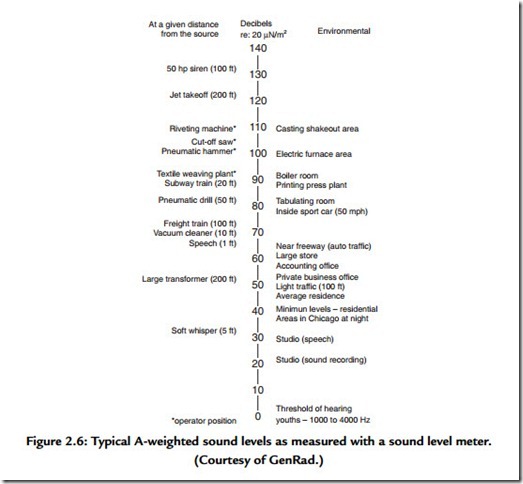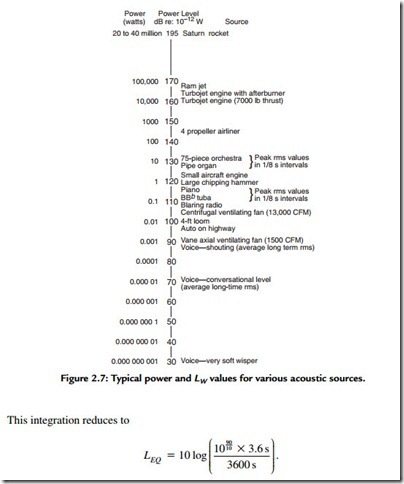The Equivalent Level (LEQ) in Noise Measurements
Increasingly, acoustical workers in the noise control field are erecting an interesting edifice of measurement systems. A number of these measurement systems are based on the concept of average energy. Suppose, for example, that we have some means of collecting all of the A-weighted sound energy that arrives at a particular location over a
At a given distance from the source
certain period of time such as 90 dBA for 3.6 s (this could be a series of levels that lasted seconds, hours, or even days). We can then calculate the decibel level of steady noise for, say, 1 h that would be the equivalent level of the dBA for 3.6 s. That is, we wish to find the energy equivalent level for 1 h:
where PA is the acoustic pressure, Po is the reference acoustic pressure, and 3600 s is the averaging time interval.
Thus 1.0 hour of noise energy at 60 dBA is the equivalent energy exposure of 90 dBA for 3.6 s.
LDN (day–night level), CNEL (community noise level), and so on all follow similar schemes with variation in weightings for differing times of day, etc.
It is of interest that shooting a 0.458 magnum 174.7 LP (peak) for 2.5 ms translates into
of steady sound for 1 h. OSHA allows only 15 min of exposure to levels of 110–115 dBA. As Howard Ruark’s African guide, Harry Selby, remarked after Ruark had accidentally set off both barrels at once of a 0.470 express rifle while being charged by a Cape buffalo, “One of you ought to get up.”



